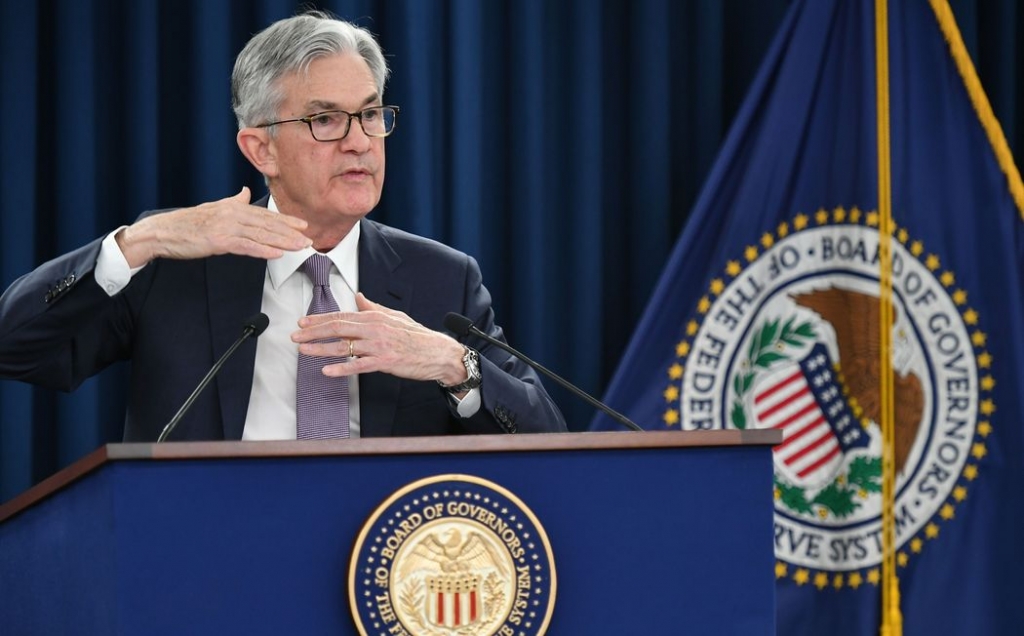What to expect from FED’s upcoming meetings?
There’s a bone of contention at the moment between the profile of FED policy priced by the market, and the sort of message that Fed members want to put across.

Federal Reserve officials raised interest rates by 75 basis points to 2.25- 2.5% for the second straight month
>> The FED might sooner end its tightening cycles
It seems FOMC members think the market has jumped the gun by anticipating rate cuts next year. But, while the US money market might be too optimistic about lower rates in the future, traders in the UK seem to be setting their rate hike expectations too high, according to the Bank of England.
To see this, we need to consider central bank inflation forecasts. The central bank will forecast inflation to be around the target level a few years out, even if there’s been a huge inflation shock.
For instance, the Fed puts PCE inflation at 2.2% at the end of its forecast horizon (end 2024), while the ECB sees inflation falling magically to 2.1% in the same year, even though both have current inflation levels that are massively above the 2% target. This is understandable in some ways. For example, if the Fed predicts that PCE inflation will remain close to 5% by the end of 2024, people will wonder why policy rates are not much higher right now.
In short, the central bank wants to show that their actions are on track to bring inflation back to target. The Bank of England also has a strong tendency to forecast inflation converging to the 2% target over the long haul. And this might not seem an unreasonable forecast, given that inflation has averaged very close to 2% since the bank was given control of monetary policy in 1997. But when inflation is seen rising to over 13% this year, there are bound to be many that would question a 2% forecast right now.
In fact, it is worse than this because the bank forecasts not just a fall to the 2% target but a significant overshooting. Its forecast for CPI inflation in Q3 2025 (the end of the forecast horizon) is just 0.8%. Furthermore, this forecast is based on crucial natural gas prices following the forward curve for 6 months and then flatlining.
If you assume instead that gas prices follow the forward curve through the whole forecast period, the CPI forecast comes down to just 0.3% in Q3 2025. This is because the forward curve puts gas prices at just around a third of their peak level in the outer years.
At first sight, this CPI forecast would seem to suggest that the BoE is going in for monetary overkill here, as its projections, which include an assumption for base rates, suggest that inflation will go far below the 2% target. But that’s not necessarily the case given the base rate assumptions that go into the forecast. These assumptions come from market pricing and, right now, the market projects that base rates will rise by at least 3% next year. That’s above the forecasts from most analysts, who put the base rate peak at around 2.25%, according to the 30-plus institutions in the Bloomberg survey.
>> US Federal Bank caught off guard by global inflation
Hence, what the bank seems to be saying here is that its own views are more in line with the views of analysts than the market, as traders/investors seem to be pitching the base rate too high. Notably, that’s in contrast to US markets, where many Fed members think that traders and investors are forecasting rate cuts too early.
Perhaps even more notable is the fact that the BoE’s UK’s GDP forecasts are noticeably more bearish for 2023 (at -1.5%) than the Fed's (1.7%). In other words, if we were anticipating market pricing to be different from central bank thinking, we might have expected US markets to pitch its forecasts too high, and those in the UK too low.
For the Fed, it could continue to raise interest rates by 75 bps to 3.25% before it closes its current tightening cycle. However, Mr. Steve Barrow, Head of Standard Bank G10 Strategy thinks that the prospect of rate cuts next year is limit ed but, at the same time, its peak for the fed funds target of 4.5% next year is around 75-bps higher than the Fed median. As for the BoE, he suspects that the market is right to project base rates rising to 3%, or more, but, unlike the BoE our sense is that such "high" rates won’t mean a significant undershooting of the inflation target over the next few years.








